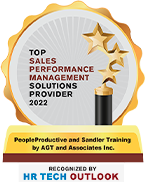As AI and other technologies expand their impact, paradoxically this trend makes it even more important to focus on the human side of work. While many organizations are aggressively automating work, smart organizations must address the changing needs of their remaining workforce in parallel if they are to remain competitive.
No worker can be oblivious to today’s rapid transfer of work from man to machine. This trend permeates the workplace and creates rising levels of stress and uncertainty in its wake. Enhancing employee engagement by building an optimistic, resilient and confident organizational mood is the best counter balance to this ongoing threat.
In our last article (link), we argued that the key to employee engagement lies in augmentation, which we defined as providing human workers with the tools and environment to help them maximize their contributions to organizational success.
But augmentation requires much more than mechanics. To deeply motivate employees, a warm overarching human resource approach is needed, one that centers on an explicit recognition that employees are strategic organizational assets, not discretionary costs, and not just what’s left when the automation is done. This policy must explicitly recognize that engaged employees are the key to customer happiness and organizational success.This warmth must be nested in a powerful mission that emotionally motivates employees in a way that shareholder value never can.
An article in the July 2013 issue of Harvard Business Review, Connect then Lead, stated that the research findings were very clear: Warmth is the precursor to human connection. As a leader, or individual contributor, warmth facilitates trust, making it a leadership imperative in the digital age.
Consider the difference in temperature between Walmart and Costco. Walmart has consistently embraced a tough approach about employees, causing multiple lawsuits. They have a harsh workplace environment featuring cost-driven behaviors such as 32 hour workweeks to avoid paying benefits. Because of this cold approach, turnover is high, customer and supplier complaints are frequent,and employee engagement is low.
On the other hand, Costco, a direct competitor, offers a stark difference. Employees receive significant training and generous benefits. Turnover is a fraction of Walmart’s and the average hourly pay is almost twice. Unsurprisingly, Costco has double the sales per square foot that Walmart does.
To better define engagement, our last article introduced the 7 T’s (Time, Talent,Tools, Training, Trust, Transparency, and Teamwork), as the primary elements of engagement. This article and the next article will focus on how to implement these elements in the most effective way.
With in the logic of the 7 T’s there are two complementary segments, the extrinsic versus intrinsically driven factors. Here we’ll focus on the implementation of the former group
o Time– from too busy to think to reflection.
o Talent– from needs to capabilities.
o Tools– from problems to solutions.
o Training– from questions to answers.
ExecuteEngagement Excellently
Time: Moving from too busy to think, to reflection and ideation.
o Current Situation – no time to think. Busyness leads to low engagement and low productivity.
o EmployeeResponsibilities
• Find time every day, block off your calendar, and escape the tyranny of busyness.
o Employer Responsibilities
• Create smart email policies.
• Conduct extensive training on how to run efficient and productive meetings.
• Collect data on how time is spent and work to eliminate bureaucracy.
• Change the performance evaluation process. Make it clear that it’s ok to think, but it’s not ok to just act.
• Understand that the most productive employee may just be the one with their feet on the desk staring out the window.
Talent:Moving from immediate need to strategic capability.
o Current Situation- HR does not have time to evaluate long-term organizational capability needssuch as analytics, data engineering, strategic workforce planning, etc. Instead of growing and nurturing people tofill these important roles, capable people who aren’t engaged just leave.
o EmployeeResponsibilities
• Create your own distinctive competence and stay current.
• Read the market for skill opportunities.
• Take the lead on continually reinventing yourself.
• Realize the cavalry is not coming to save you. Noone will give you anything. It is up toyou.
o Employer Responsibilities
• Assess long term capability needs often and creates a strategic workforce plan.
• Refresh performance evaluations to reflect capability needs.
• Create capability assessment governing process to keep your workforce plan current.
Tools: Moving from needs to capabilities
o Current Situation
• Big Data is creating the need for widespread analytic tools and other forms of decisionsupport.
• Most organization sare only scratching the surface of current ERP capabilities.
• Increased availability of contextual tools to assist in real-time decision-making.
o Employee Responsibilities
• Get training one very possible tool to enhance employability.
• Become a local expert, i.e. Super User, if possible.
o Employer Responsibilities
• Invest in contemporary decision support tools and move rapidly.
• Add feedback mechanisms everywhere.
Training: Moving from questions to answers
o Current Situation
• Diminishing budgets.
• Learning shifting from the classroom to e-learning.
o Employee Responsibilities
• Own your own skill upgrades. It’s all on you.
• Make yourself marketable. You may be a Gig worker tomorrow. Act like it.
o Employer Responsibilities
• Make training easy to acquire.
• Ensure that new abilities are recognized.
• Increase training and education budgets.
While most of today’s focus is on robots and AI, truly smart organizations will know what to automate, what to augment, and will deploy a warm engagement approach to deeply engage their employees.
Inthe next article, we’ll focus on the final set of engagement elements:Transparency, Trust, and Teamwork that will help you stoke the fires and createsome warmth.
About Steve Stanton
Steve is the author of the recently published book, “SmartWork: Why Organizations Full of Intelligent People Do So Many Dumb Things andWhat You Can Do About It.” He is a pioneer of process innovation. For thirty years his work has been focused on improving the capability of organizations to transform themselves. Mr.Stanton is also the co-author, with Dr. Hammer, of “The Reengineering Revolution” (HarperBusiness) and the Harvard Business Review article “How Process Organizations Really Work.” Mr. Stanton holds an MBA from Harvard and a BA from the Berklee School of Music.
About Frank Wander
Frank Wander, a former turnaround CIO, is founder and CEO of PeopleProductive (peopleproductive.com), a workforce productivity company that helps customers get the best out of their people. PeopleProductive is Talent Management Reimagined®.
He is also the author ofTransforming IT Culture: How to Use Social Intelligence, HumanFactors and Collaboration to Create an IT Department That Outperforms (Wiley Publishing). This unique book is the very first operator’s manual for the human infrastructure, and will help you successfully transform your leadership style and your organization.




